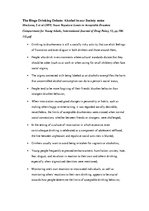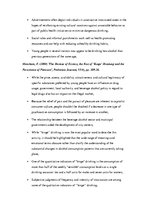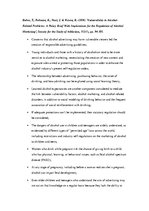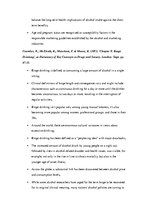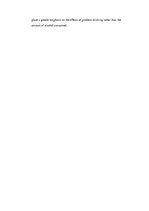-
The Binge Drinking Debate: Alcohol in Our Society
Measham, F. (2004) ‘The Decline of Ecstasy, the Rise of ‘Binge' Drinking and the Persistence of Pleasure’, Probation Journal, 51(4), pp. 309-26.
• While the price, access, availability, attractiveness, and cultural legitimacy of specific substances preferred by young people have an influence on drug usage, government, local authority, and beverage alcohol policy in regard to legal drugs also has an impact on the illegal market;
• Because the relief of pain and the pursuit of pleasure are inherent to capitalist consumer culture, people shouldn't be shocked if a decrease in one type of psychoactive consumption is followed by an increase in another;
• The relationship between the beverage alcohol sector and municipal governments aided the development of city centers;
• While ‘’binge’’ drinking is now the most popular word to describe this activity, it should be highlighted that the wide range of meanings and emotional terms obscure rather than clarify the understanding of the substantial changes in alcohol consumption patterns that are currently taking place;
• One of the quantitative indicators of "binge" drinking is the consumption of more than half of the weekly "sensible" consumption levels on a single drinking occasion: ten and a half units for males and seven units for women;
• Subjective judgments of frequency and intensity of intoxication are among some of the qualitative indicators of ‘’binge’’ drinking;
…
MacLean, S et al (2018) Youre Repulsive Limits to Acceptable Drunken Comportment for Young Adults, International Journal of Drug Policy, 53, pp.106-112.pdf • Drinking to drunkenness is still a socially risky activity that can elicit feelings of frustration and even disgust in both drinkers and those around them; • People who drink in environments where cultural standards dictate that they should be sober (such as at work or when caring for small children) often face social stigma; • The stigma connected with being labeled as an alcoholic exemplifies the harm that uncontrolled alcohol consumption can do to a person's social status; • People tend to be more forgiving of their friends' drunken behavior than strangers drunken behavior...

